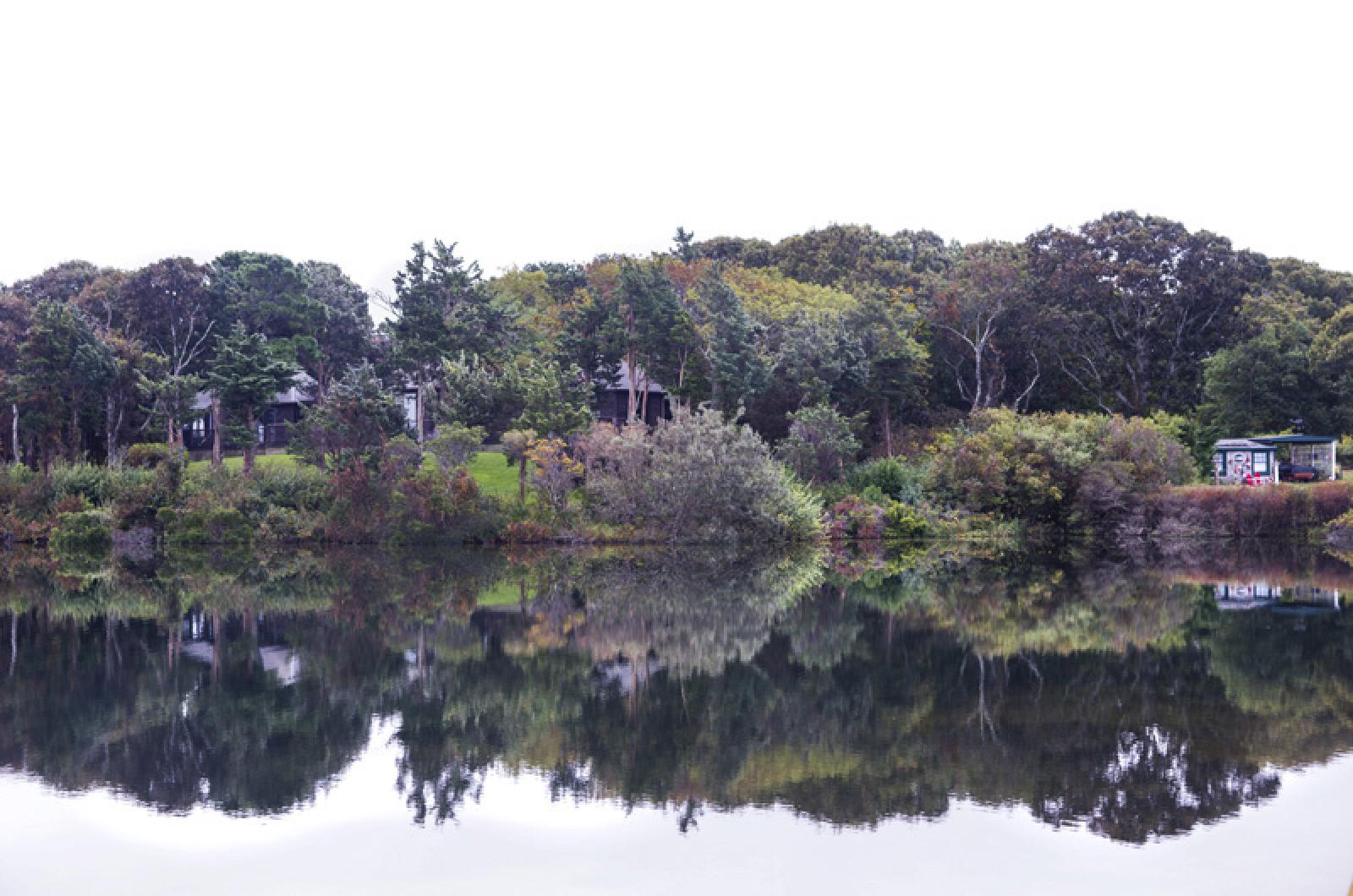From the Oct. 9, 1970 edition of the Vineyard Gazette:
A vexed subject in Vineyard history came up last week with the difficulty in deciding whether a particular hillside in the East Chop region was a park, a mysteriously named “plaza,” or just ordinary private property. Confusions such as this have arisen from the free and easy planning by developers in the boom times of the past century.
The most extreme instance was that brought about by the Vineyard Grove Company which at different times offered three plans for development of its 55 acres on East Chop. The plans didn’t agree, and they showed open spaces not specifically named as parks which late raised questions of ownership. The East Chop Association finally extinguished all old doubts.
In the case of Oak Bluffs itself, originally a development of the ambitious Oak Bluffs Land and Wharf Co., the promoters at last finding themselves in a financial slough, decided to sell Hartford Park, Ocean Park, and others for building lots. The state Supreme Judicial Court in a precedent-breaking decision written by Oliver Wendell Holmes, decided that the parks could not be sold. They had never been formally accepted by the town, but usage itself was better even than acceptance. Since that ruling, “acceptance“ has never been a magic legal term.
The hillside in question was part of almost forgotten Bellevue Heights, laid out by Tarleton Cadwallader Luce in the early seventies in “lots, avenues and parks” — with apparently at least one “plaza.” Was there a dedication of these parks to public use? Was there public usage tantamount to acceptance?
The questions run confusingly back in time, involving history, law, and even stirrings of adventure.
The stripping of trees and shrubs on the Plaza off New York avenue was formally condemned last week by the Martha’s Vineyard Garden Club when its members attended the Oak Bluffs selectmen’s meeting and decried a private owner’s removal of greenery, without park department permission, from an area defined on a town map as a plaza.
“The retaining of trees and natural beauty around Crystal Lake, near which the land in question lies, is important not only for the healthy preservation of the vegetation and wildlife in the area, but also to promote the natural assets of the Island,” the Garden Club said.
Everett Rogers, chairman of the board of selectmen, questioned whether the Plaza had ever been accepted by the town as a park land, but said he would seek information on the matter of the town counsel.
“The Plaza” is shown on a plan for the development of Bellevue Heights, entered in the Registry of Deeds in 1872. It was customary for such plans to show open spaces and parks, and “The Plaza,” since it adjoined Park street and a small body of water called “The Pool,” was obviously intended to be a park.
One law suit at Oak Bluffs was carried to the state Supreme Judicial Court when cottagers overlooking the bathing beach contended that the beach had been dedicated as an open space by the Oak Bluffs Land and Wharf Co., and that the view from the bluff was embraced in the dedication.
The decision, written by Judge Oliver Wendell Holmes, was in favor of the cottagers, finding that the open space had been dedicated to the public and that the view of the sea from the bluff was a valid part of the dedication.
This case relied somewhat upon the earlier and more famous Oak Bluffs Park Case which grew out of the action of the same company in attempting to sell for house lots the parks that head been laid out and shown on the plans of the development. The first action in the prolonged case, Abbott vs. the Inhabitants of Cottage City, resulted in a defeat for the town, which was ordered to pay George C. Abbott, “purchaser” of Ocean Park, for a strip taken in the widening of a town avenue.
This finding was reversed by the Supreme Judicial Court, Judge Holmes finding that “acceptance” of the parks by the town was unnecessary, that there was a dedication to the public, and that Mr Abbott was not entitled to payment for the strip taken from Ocean Park.
Still another action followed, and on Sept. 21, 1891, the state’s highest court ruled that no acceptance of the parks by the town was necessary, that acceptance need not appear of record, and that it need not be by the town. In fact, the acceptance was by the public at large. If the development company did not intend to dedicate the parks shown on its plans, the court said, “this course was inconsistent with common honesty.”
Since the decline and fall of Bellevue Heights is now shrouded in the haze of years, some legal investigation will probably be needed to establish the status of “The Plaza.” But all the precedents show that parks, once dedicated and shown on plans used to bring about the sale of lots on the development, cannot easily be extinguished.
Compiled by Hilary Wallcox







Comments
Comment policy »